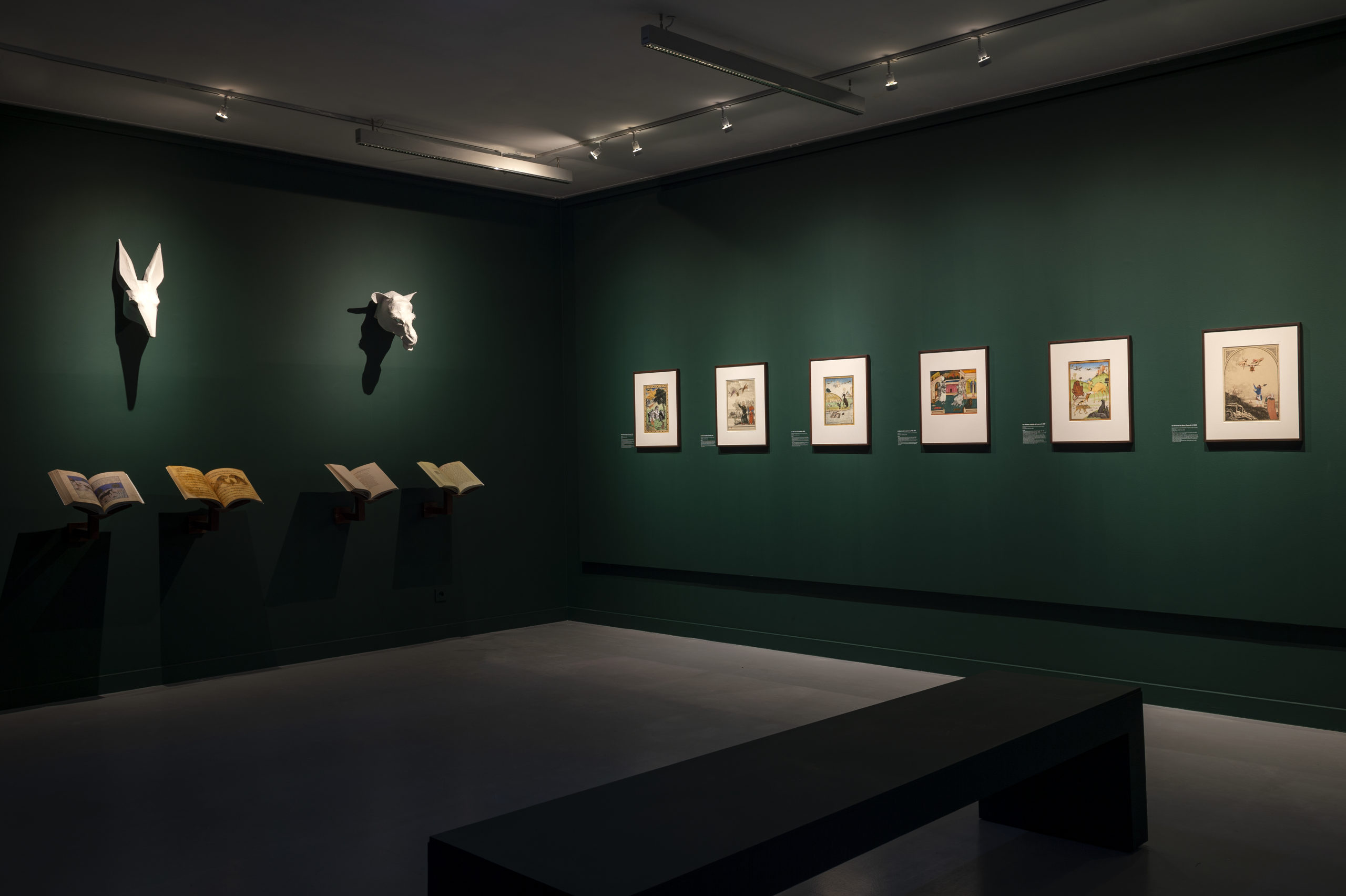"Yesterday is coming back and I can hear it" by Katia Kameli
Introduction
Since the beginning of the 2000s, Katia Kameli has been developing a dense and multifaceted body of work. Grounded in two cultures – French and Algerian – she questions the blind spots of history, taking up the role of an intermediary between different territories. Following the paths she herself has chosen, she makes connections between distant facts, repairs broken relationships and ensures the voices of those who have been ignored are heard. In so doing, she writes a counter-narrative in which her different subjects of research mingle and combine to weave together a multitude of perspectives.
Katia Kameli’s art lies at the crossroads of poetry, visual studies and artisanal techniques. It is the fruit of a construction of relationships, relations that are built out of affinity, proximity and friendship. Her first solo show in two Parisian cultural institutions brings together an ensemble that includes existing works and new production.
The exhibition at the ICI puts her creations of the last 20 years under the spotlight. It showcases a consistent approach in which narratives circulate and are transformed, transposed and superposed across different places and times. In the exhibition, Katia Kameli takes on the role of a translator: her photos, videos, drawings and installations bring into play a formal and conceptual language that comes together in an in-between space situated between different languages, sounds, aesthetics and cultures.
The Canticle of the Birds, a project co-produced by La Criée, Centre d’Art Contemporain in Rennes includes a video she filmed in the Goutte d’Or neighbourhood of Paris in partnership with the Conservatoire du 18e – Gustave Charpentier. Stream of Stories, a work that addresses the theme of metamorphosis in Kalīla wa Dimna (the fables that inspired Jean de La Fontaine) is enhanced by a hand tufted rug made in collaboration with textile artist Manon Daviet and with the support of the Cnap.
The exhibition at Bétonsalon is organised around the Algerian Novel; it presents the three videos that comprise the latter (shot between 2016 and 2019) and reveals Katia Kameli’s research for a fourth chapter that takes as its starting point La Nouba des Femmes du Mont Chenoua, a film directed by the Algerian filmmaker and novelist Assia Djebar in 1977.
By basing itself on the first Algerian film directed by a woman (copies of which still circulate today), Katia Kameli seems to be continuing the work of Djebar, who looked back at the stories of women in the resistance during the war for independence in the town and mountains of Cherchell. By collecting accounts from women of different generations, she composes a polyphonic, living narrative in which personal and collective stories are made audible amidst the complexities of a colonial past.
The Canticle of the Birds
The Canticle of the Birds comprises musical sculptures, watercolours, a fresco and a film. It draws inspiration from the mystical poem of the same name written by Farīd al-Dīn Attar circa 1177.
This masterpiece, one of the most significant works of Persian literature, tells the story of the many thousand birds that set off on a quest to find the Sīmorgh, a mythical creature that is an allegory for God. Guided by a hoopoe, which symbolises wisdom, they cross the seven valleys of the Quest, Love, Knowledge, Detachment, Unity, Wonderment, Poverty and Annihilation, gradually leaving behind their possessions, their certitudes and their egos. Only thirty birds survive this journey of initiation and, as they see their reflections in the mirrorlike creature, they realise that they and the Sīmorgh are one. The literal translation of the Persian word Sīmorgh is “thirty birds”.
Katia Kameli’s musical sculptures are made from terracotta, as if in a tribute to the original material and the act of modelling clay. They come to life during the exhibition for a performance with musicians, as well as in the film screened in the second gallery. The film shows a group of young women, most of whom are learning the flute at the Gustave Charpentier municipal conservatory in Paris. The young women personify the birds from the story and play their melodies in the streets and parks of the Goutte d’Or neighbourhood. Dressed in watercolour-decorated albs, they recreate an abstract dreamlike world in the urban surroundings of the ICI.
Enriched by collaborations, stories, colours and ancient gestures, Katia Kameli’s radiant and polyphonic interpretation of The Canticle of the Birdsx resonates with her personal journey.
Coproduced by the ICI and La Criée – Centre d’Art Contemporain in Rennes.
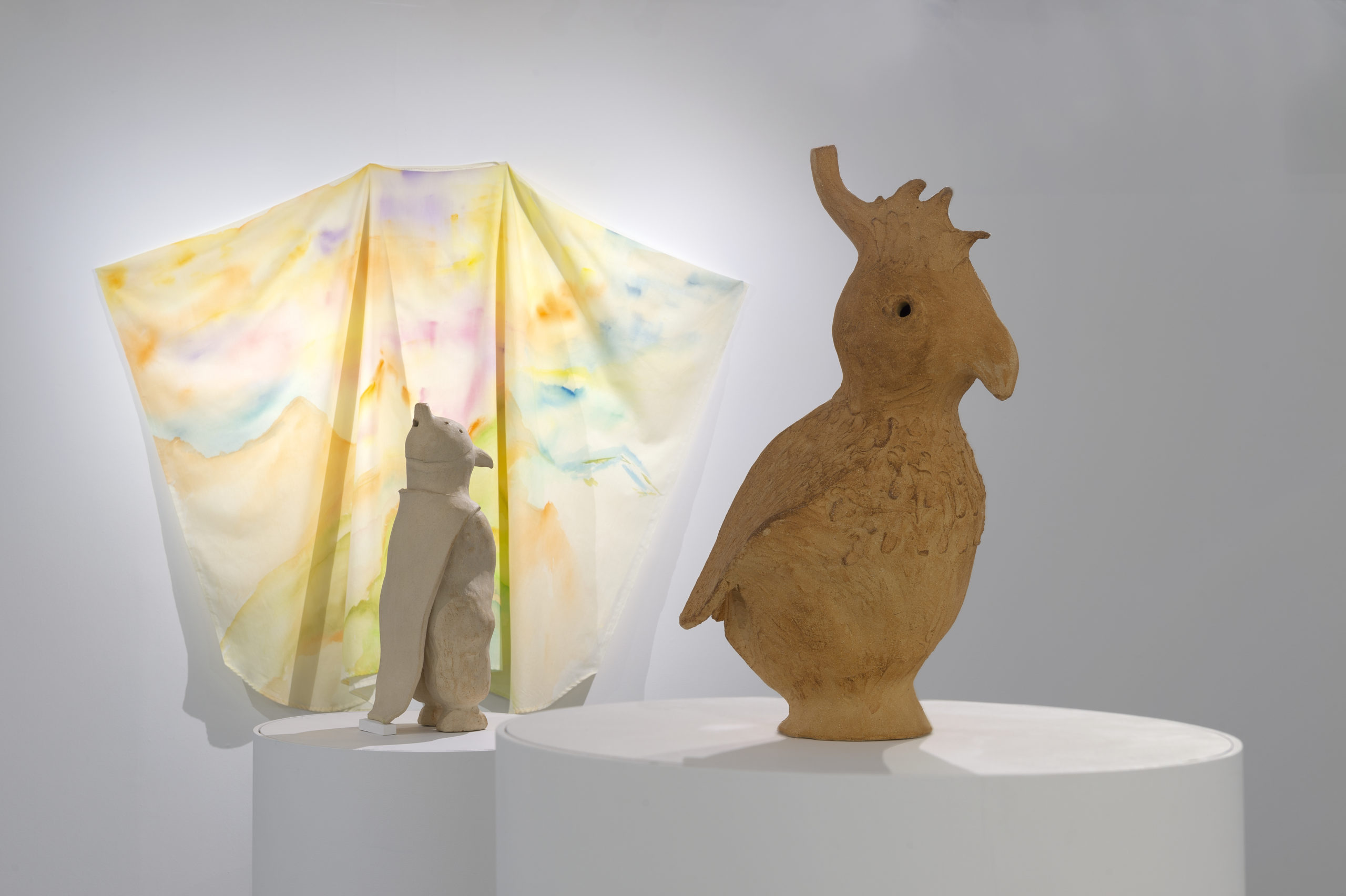
Bledi, a possible scenario
The video Bledi, a possible scenario takes a look at Algerian society in the 2000s after the years of civil war, a period otherwise known as the ‘black decade” (1991-2002).
Alternating digital and super 8 images in black & white and colour, Katia Kameli plays with different periods in time and narrative voices to compose a documentary that is autobiographical in scope. Interviews on the ferry between Marseille and Algiers, candid shots of everyday life in Algiers filmed in the public space and private moments in the female family circle draw a portrait of a society whose present must come to terms with past trauma and an uncertain future. Kameli appears here and there in a question, a short interjection or a reflection, as if questioning whether she herself belongs to this complex, layered ensemble to which her series of drawings Bledi, a possible scenario also refers. In the latter, images traced from her archives and the Algerian press and superposed on tracing paper combine to hinder our perception.
The critical significance of Bledi is therefore revealed in a succession of visual and sound metaphors in which the transmission of silence, a lack of understanding between the younger and older generations, dreams of exile, the persistence of exoticising visions, the regression of the status of women, religious tensions, the contrast between rural and urban populations and technological progress intermingle.
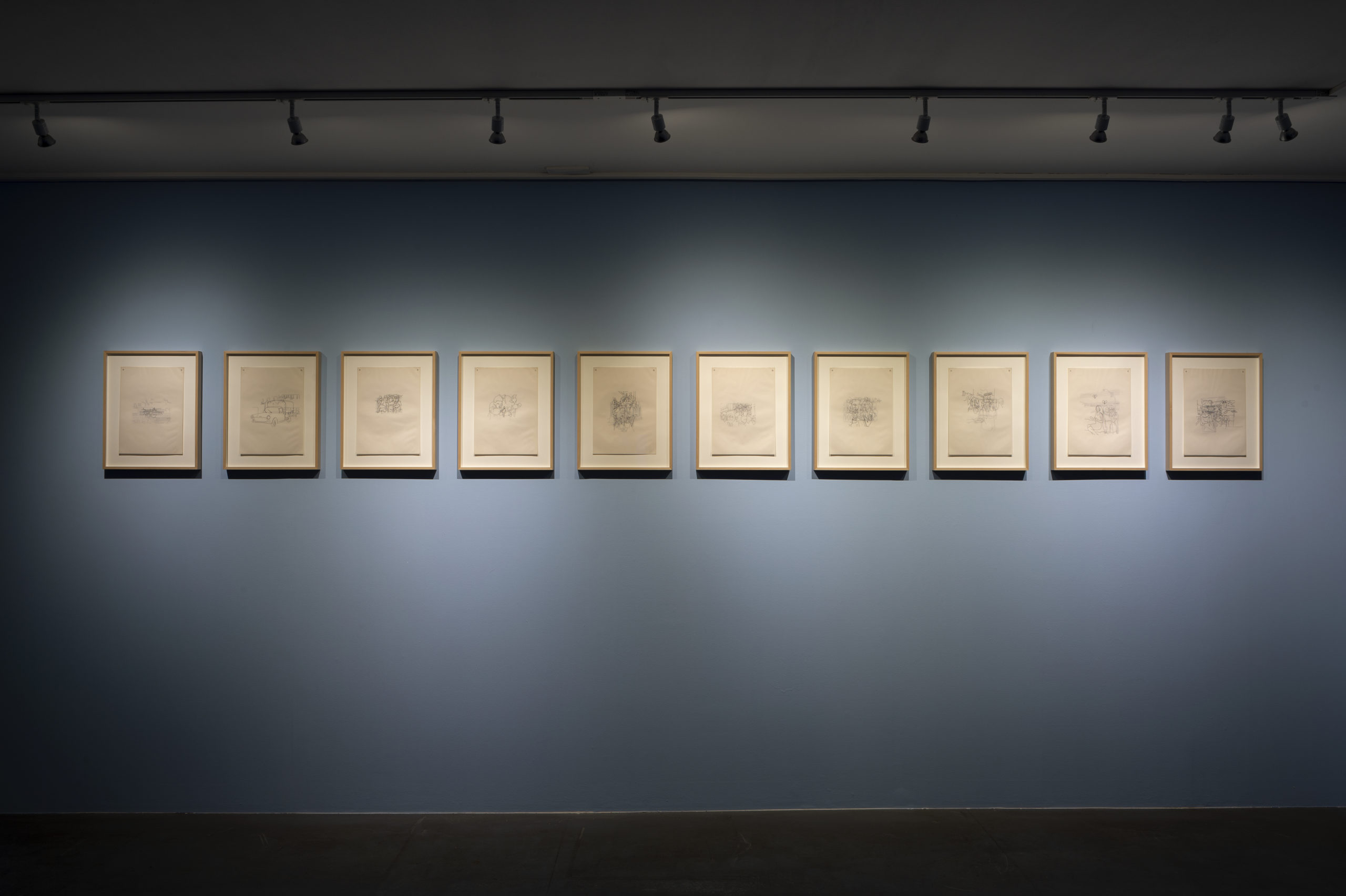
The Storyteller
Halqa, a term designating the circle that forms around a storyteller, is the oldest form of Moroccan theatre. These open-air performances with neither stage nor décor address universal themes, such as love, society, politics, religion and death. Halqa plays a role of cultural transmission in which the poet, the hlaïqya, transmits a traditional oral heritage.
Abderahim Al Azalia is a very special storyteller who gives his own unique renditions of Bollywood movies on Jamaâ El Fna square in Marrakech. In the video The Storyteller, he is performing in the city’s Théâtre Royal, whose concrete structure is as yet unfinished, where he is telling the story of Dosti by Satyen Bose. This classic filmed in black & white follows the series of misadventures of two young disabled orphans, Ramu and Mohan, who succeed in escaping their condition by singing and playing music in the streets, drawing crowds each time in the same way as a halqa.
This encounter between popular Indian cinema and traditional Moroccan storytelling organised by Katia Kameli forms the premise for Stream of Stories, which is presented later in the exhibition. Using the metatheatrical device of a mise en abyme, The Storyteller questions how stories spread and the connections that exist between literature, orality, images and imagination.
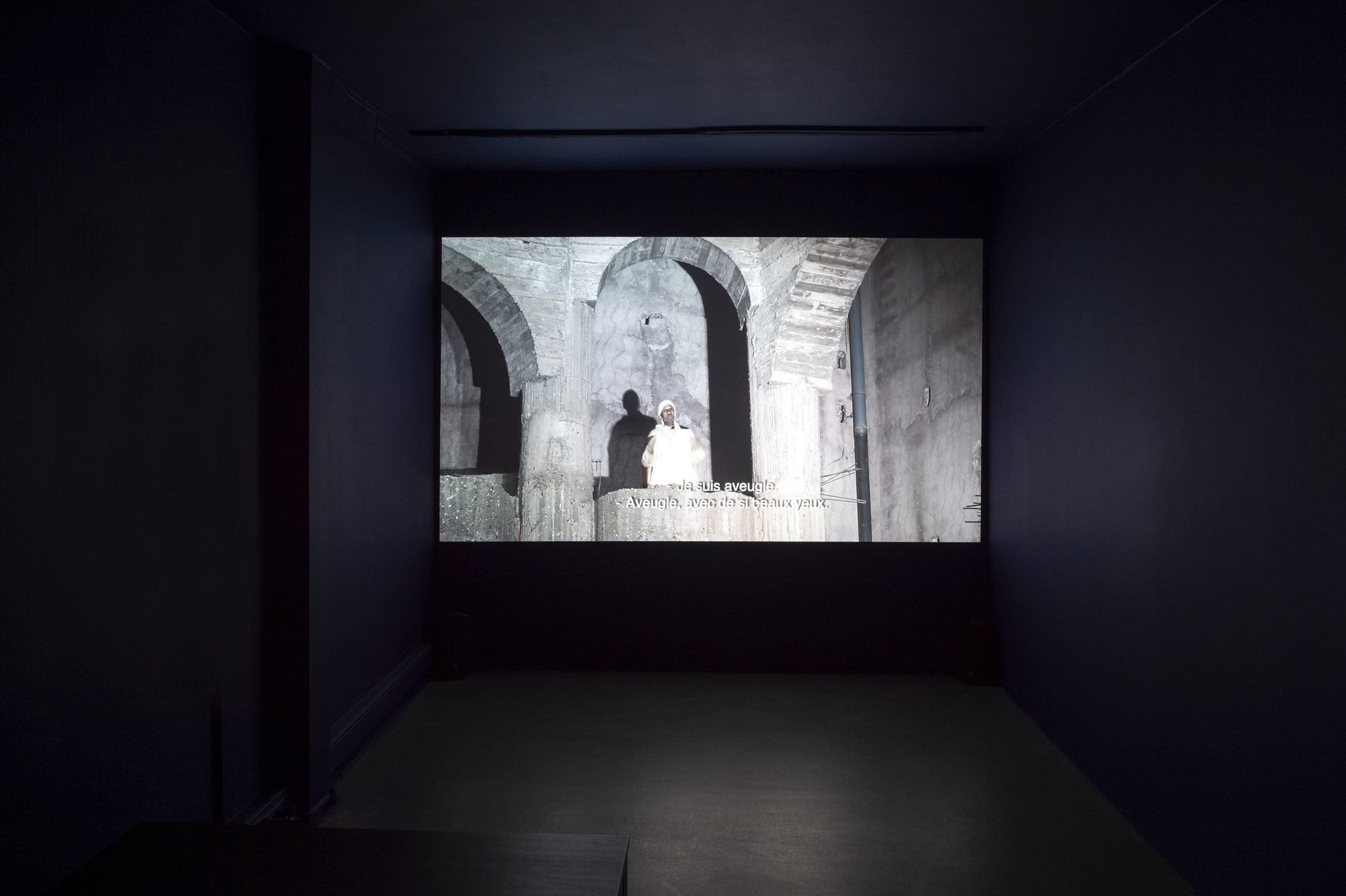
Stream of Stories
Stream of stories is a dense, process-based work that focuses on questions of intertextuality and translation to reveal the epic geographical, temporal and cultural story behind the poem that inspired the Fables of Jean de La Fontaine.
In 1678, in the forward to the second volume of his Fables, La Fontaine admits to being inspired by the Pañchatantra, which was supposedly written by a Brahmin called Vishnu Sharma in the 3rd century BC. The Pañchatantra, which in Sanskrit means The Book of Instruction in Five Parts, was a succession of allegorical animal fables that was later translated into Persian by Borzuya, a physician who lived at the end of the 6th century. In 750, the texts were translated into Arabic by Ibn Al-Muqaffa, who entitled the anthology Kalīla wa Dimna. It was this version that lead to the fables becoming much more widely known in the West. Katia Kameli has brought these stories to our notice once more in a tangled series of works/chapters that comprise screen-printed fables, illustrations made from those used in various ancient manuscripts, animal masks and videos that include conversations with translators and specialists.
A new chapter (the seventh) entitled The dove with the collar, the gazelle, the raven, the rat and the tortoise is on show here. It takes the form of a tapestry designed by Katia Kameli from six different manuscripts. It was hand tufted (a technique that involves using a tufting gun to punch strands of yarn through a backing fabric placed on a frame) by Manon Daviet and is accompanied by an interpretation by author Chloé Delaume.
Coproduced by the ICI and the Cnap.
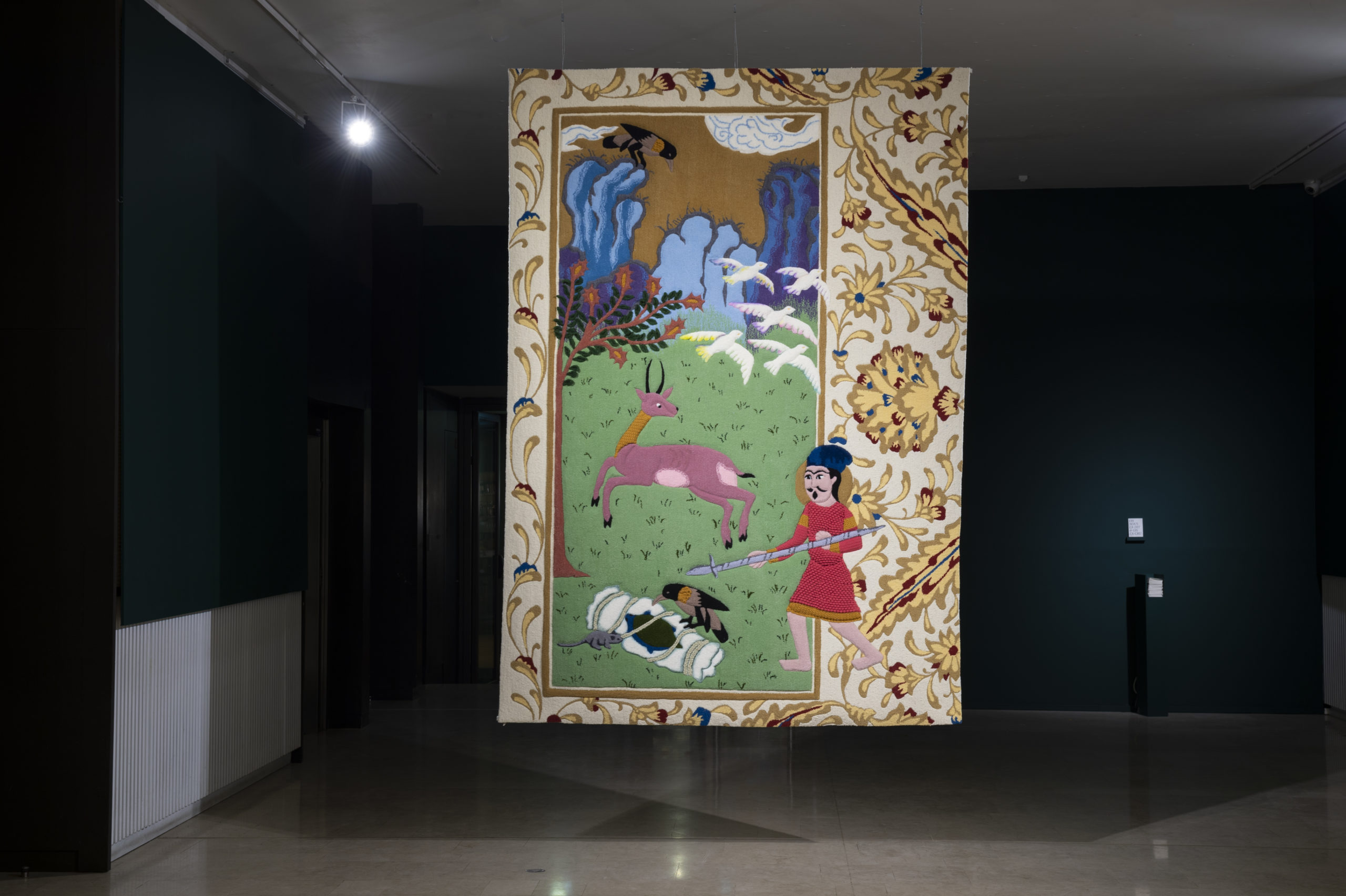
In Stream of Stories, Kameli analyses the translation process that is at work in a collection of fables known as Pañchatantra in its Sanskrit, Indian and Persian versions, Kalīla wa Dimna in Arabic and as Les Fables de La Fontaine in French. By diversifying her visual processes, the artist gives tangible form to the connections, intertexts and influences across the ages.
In Chapter 2, she produces large-format screen prints of different versions of the same fable, indicating shifts in meaning by highlighting the passages in question with gold leaf. Kameli also makes collages that combine illustrations from manuscripts from different periods and in different styles – reproductions of the manuscripts themselves that can be handled are also on show (the originals are conserved in the Bibliothèque Nationale de France and the Royal Library in Rabat).
In Chapter 5, Kameli gives voice to Borzuya, to whom the first translation of the fables from Sanskrit to Pavlavi (Middle Persian) is attributed. This text has been lost. His role is played by actress Clara Chabalier. The physician recounts his search for truth and his scepticism towards established religions. By asking King Khosrow I (Khosrow Anushirvan) to have his name mentioned in the introduction to Kalīla wa Dimna, Borzuya underlines the important role played by translators and the influence of their interpretation.
In Chapter 6, Katia Kameli has Clara Chabalier play a storyteller. In the centre of a Moroccan riad, this modern day Scheherazade looks back at the origins and chequered history of the fables. She underlines elements of cultural porosity and questions what is truly at stake when a text is translated or copied. Her narrative follows the trace of one of the oldest documents, manuscript 3655 that is preciously conserved at the Royal Library in Rabat and which cannot be consulted by the general public.
